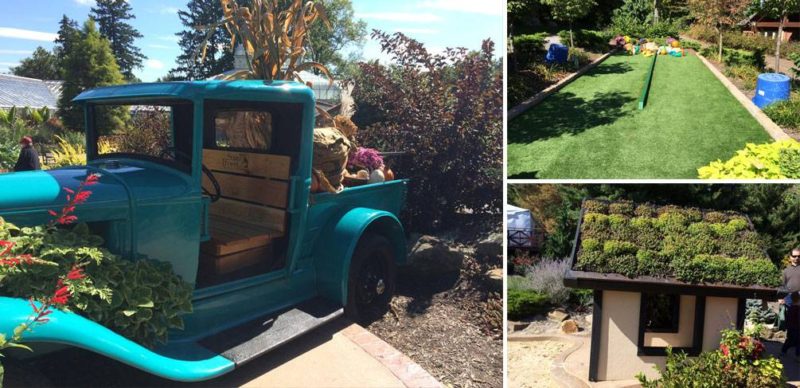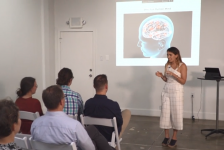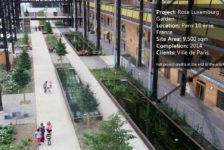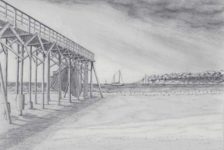Article by Erin Tharp The Playgarden, by The Pattie Group of Novelty, in Stan Hywet Hall & Gardens, Ohio Traditionally, children’s playgrounds are found in schoolyards, at churches, or in public parks. But how about putting a playground in a more unconventional place, such as outside a National Historic Landmark? That’s exactly what The Robert O. and Annamae Orr Family Foundation did at Stan Hywet Hall & Gardens in Akron, Ohio. Opened in 2014, the Playgarden is a 5,000-square-foot playground located just north of the Corbin Conservatory on the estate’s grounds. Designed by The Pattie Group, a full-service landscaping company out of Novelty, Ohio, it features multiple areas meant to stimulate the imaginations of children of all ages and to introduce them to the history of Stan Hywet.
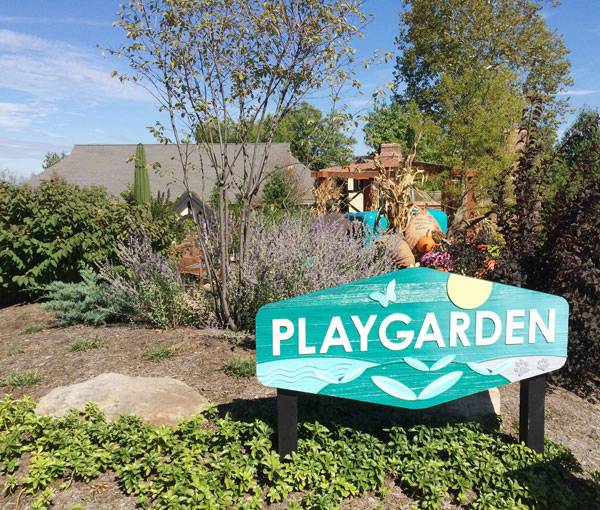
Playgarden. Photo credit: Ann Norman
The Playgarden, by The Pattie Group of Novelty
“The Stan Hywet project has given us another unique opportunity to design a garden specifically for children’s delight and family interaction,” said Jonas Pattie, executive vice president of The Pattie Group. “The Stan Hywet leadership team’s commitment to making this project truly special and reflective of the rich and storied history is inspiring. We are honored to collaborate with Stan Hywet to create a new garden experience for families to enjoy for generations to come.”

Playgarden. Photo credit: Ann Norman
The design for the playground is an homage to the house whose property it sits on, and it is this design feature that makes it a truly one-of-a-kind experience. Stan Hywet is the sixth-largest historic home that is open to the public in the United States, and it features five historic buildings and eight historic gardens covering 70 acres. Architect Charles Schneider designed the estate for Frank “F.A” Seiberling and his family, and it was built between 1912 and 1925.
…it was one the best examples of the American Country Estate movement… At the time, it was one the best examples of the American Country Estate movement, which flourished during the Industrial Age and was characterized by estates built using the wealth of self-made industry giants such as Seiberling,
founder of The Goodyear Tire & Rubber Company.

Playgarden. Photo credit: Ann Norman
The estate became a representation of all that the family loved and cherished, and this can mostly be attributed to Frank’s wife, Gertrude. She was an accomplished artist, musician, and patron of the arts, and she filled the home with both art and music. Their collection of musical instruments included a grand piano, harpsichord, and a harp-piano, all of which later became the inspiration for one of the six areas, Harmony Hall, in the Playgarden.
…She was an accomplished artist, musician, and patron of the arts, and she filled the home with both art and music... Once visitors pass through the Playgarden gate, which is modeled after the arched ceiling of the Great Hall in the Manor House, they enter Harmony Hall. Here, they are greeted by an interactive chandelier of “organ pipes” inspired by the historic Aeolian Organ, which boasts 2,670 pipes and 300 chimes and is located in the Manor House Music Room. Simply walking underneath the pipes of the outdoor organ activates invisible sensors that play the instruments and release bubbles into the air.

Playgarden. Photo credit: Ann Norman
Next is the circular Splash Fountain, where the floor pattern mimics the floor found in the Manor House Round Room. This area is a favorite during hot summer days and is known to attract “kids” of all ages.
See More Articles on Playgrounds:
A 1929 Model A Ford Truck The Motion Garden features a restored 1929 Model A Ford truck, which is home to seasonal plantings. The truck is a nod to Seiberling’s influence on the automotive industry and invites kids to go for a “drive.”

Playgarden. Photo credit: Ann Norman

Playgarden. Photo credit: Ann Norman
There is also an area dedicated to the Seiberlings’ beloved St. Bernard, Joe. Joe’s Dig honors the dog and features a doghouse topped by a green roof that is large enough for children to pass through. Once they reach the other side, they are encouraged to dig for small keepsakes in the model archeological dig site.
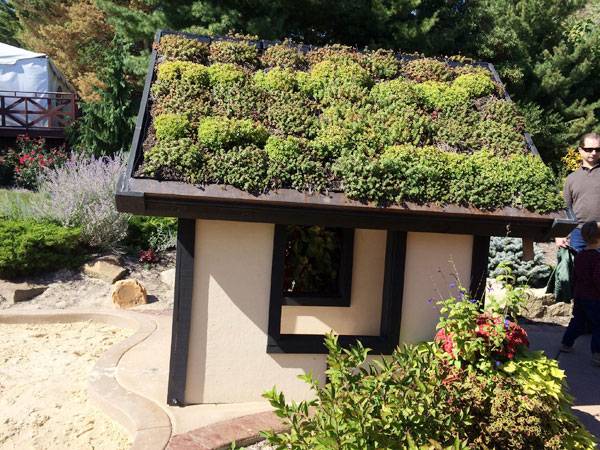
Playgarden. Photo credit: Ann Norman
The playground would not be complete without a bowling alley, a common feature to estates of this time. The two-lane Bowling Lawn is meant to be a reminder that the Seiberlings loved sporting activities and a nod to the bowling alley located in the basement of the Manor House and to the bowling lawn found outside the West Terrace.

Playgarden. Photo credit: Ann Norman
But the centerpiece of the Playgarden would have to be the Tudor Revival Playhouse, which was inspired by the estate’s Carriage House, also designed by Schneider. The playhouse is 15 feet tall and home to a spiral slide, a marble chase, a footbridge, and a rock climbing wall. But it is the architecture that is the eye-catcher here. Built in the Tudor Revival style, it even includes the “half-timbered” pattern (traditionally half-exposed wood framework) and an arched drive-through, both of which were inspired by homes the Seiberling family visited in England.
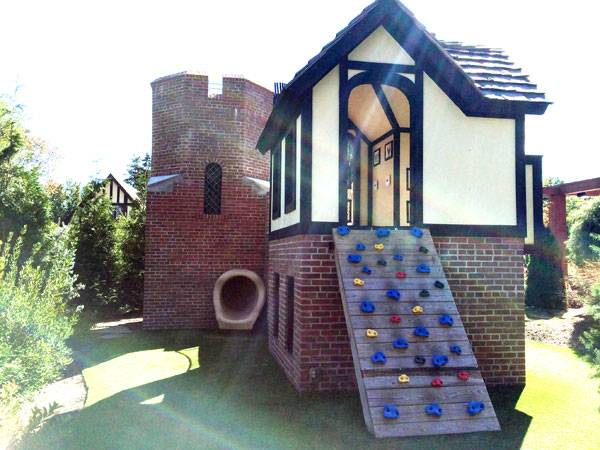
Playgarden. Photo credit: Ann Norman
It is projects like this one that are breaking the stereotypes that claim playgrounds should be gigantic, plastic, multi-colored play structures that are simply plopped down on a site. A lot of thought and imagination went into designing this space, and because of that, kids’ imaginations are allowed to run wild. Kids are also exposed to history, and therefore probably learn something while they are playing, which makes this place even more magical.
When was the last time you visited a playground that encouraged both imagination and learning? Let us know in the comments below! Leave a comment 
Playgarden. Photo credit: Ann Norman
Full project credits for the Playgarden:
Project Name: Playgarden Location: Stan Hywet Hall & Gardens, 714 North Portage Path, Akron, Ohio Designers: The Pattie Group of Novelty, Ohio Size: 5,000 square feet Client: The Robert O. and Annamae Orr Family Foundation and Stan Hywet Hall and Gardens Recommended Reading:
Article by Erin Tharp Return to Homepage
Published in Blog












